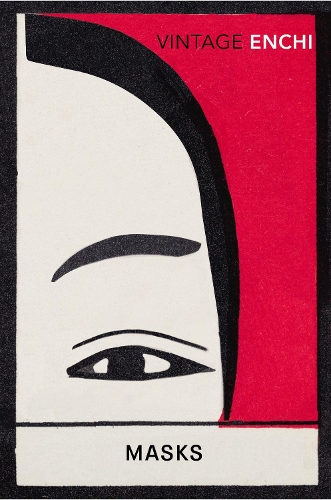
Masks
(Paperback)
Publishing Details
Masks
By (Author) Fumiko Enchi
Vintage Publishing
Vintage Classics
5th November 2019
7th November 2019
United Kingdom
Classifications
General
Fiction
895.635
Physical Properties
Paperback
144
Width 130mm, Height 198mm, Spine 11mm
109g
Description
Fumiko Enchi was a well known female Japanese writer, whose work is often compared to Yukio Mishima. She won the big Japanese Literary prizes in the 1940s (the Noma & Tanizaki) and has never been published in the UK. Published for the first time in the UK, one of Japan's greatest modern female writers Ibuki loves widow Yasuko who is young, charming and sparkling with intelligence as well as beauty. His friend, Mikame, desires her too but that is not the difficulty. What troubles Ibuki is the curious bond that has grown between Yasuko and her mother-in-law, Mieko, a handsome, cultivated yet jealous woman in her fifties, who is manipulating the relationship between Yasuko and the two men who love her.
Reviews
Clear and powerful * Kirkus *
An esoteric masterpiece * Yukio Mishima *
A subtle examination of universal female behavior * People *
[Enchis] allusions to the masks of No plays and to the classic The Tale of Genji, the brilliant way she layers and interweaves the ancient, the more recent past and the present are haunting and rich. A fictional enchantment * Publishers Weekly *
Enchis writing has some of the same amniotic fluidity as Tolstoys, an almost bodily, floating immersion into the effortless habitat of the story * The American Reader *
Author Bio
Fumiko Enchi was the pen-name of Fumi Ueda, one of the most prominent Japanese women writers in the Showa period of Japan. Her first play,A Turbulent Night in Late Spring, performed at the Tsukiji Little Theatre, was a success and a short story published in 1952, Days of Hunger, was acclaimed by the critics and won the coveted Women Writers Prize. On the publication in 1957 of The Waiting Years - a novel she took eight years to write - she won Japan's highest literary award, the Noma Prize. Enchi was made a Person of Cultural Merit in 1979, and was awarded the Order of Culture by the Japanese government in 1985. She was elected to the Japan Art Academy shortly before her death in 1986.
